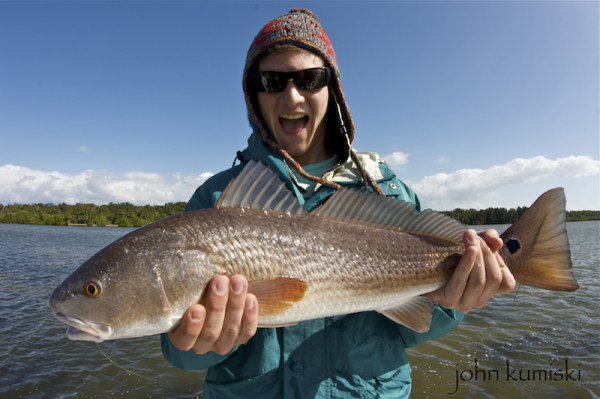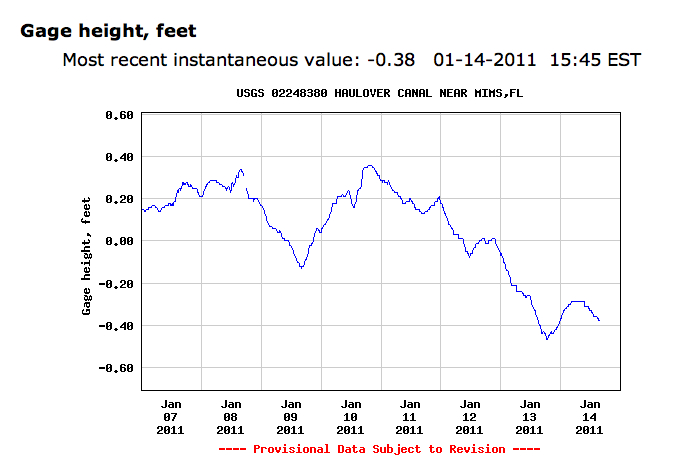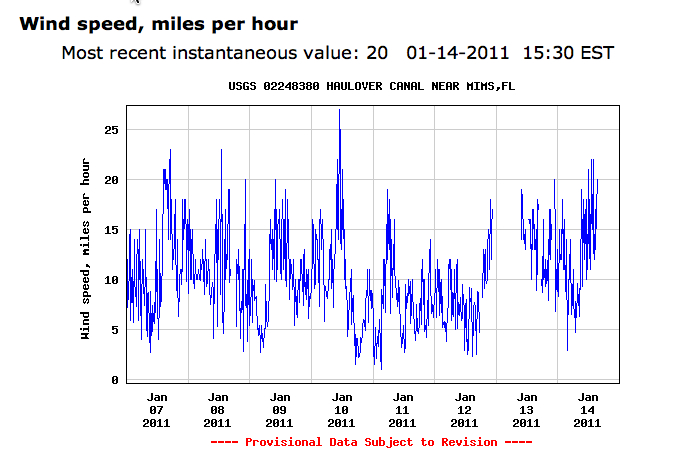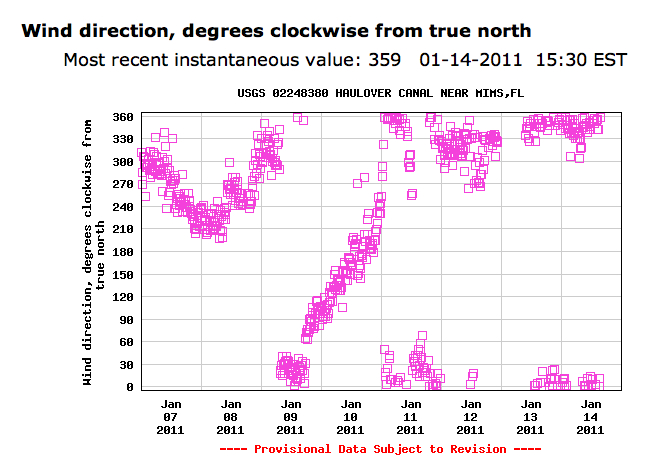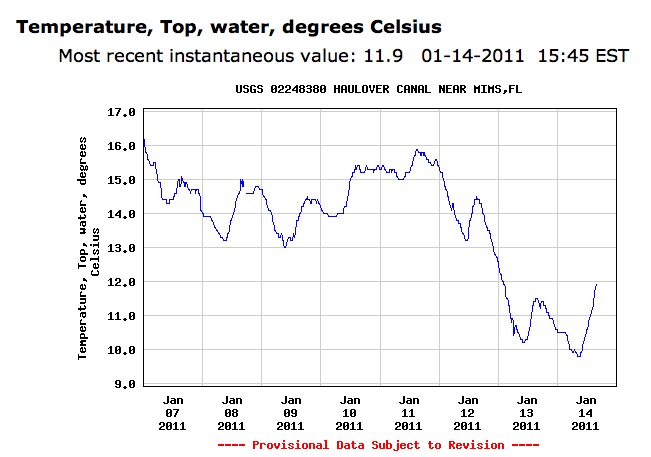Wind Speed and Water Temperature, Keys to Winter Fishing Success
Many factors affect our success at catching the fishies. During the winter months Wind Speed and Water Temperature are the Keys to Winter Fishing Success. The two are related to each other.
Millions of American anglers have a website at their disposal that contains a priceless store of up-to-the minute information on wind speed and direction, water level and flow rates, water temperature, and more. It’s called USGS Real Time Water Data. The URL is http://waterdata.usgs.gov/nwis/rt
Use the drop-down menu on the right side of the page to find the monitoring station closest to where you fish. Since mine is at the Haulover Canal, that’s what we’ll use for the following examples. The URL if you’d like to visit that particular page is http://waterdata.usgs.gov/nwis/uv?02248380
Boaters operating on the shallows of the Indian River or Mosquito Lagoons might like to know the water level before they even leave home. It’s on the website.
You can see from the screen shot above that the water has been dropping for several days. That may be due to the hard north winds blowing the water out. At any rate, you know that since the water is so low the fish will have to be concentrated in deeper areas. Many of the flats will be almost dry.
Next, the wind speed for the previous week is shown graphically. The best day of the week to fish was most likely January 12, as the wind speed was between three and twelve miles per hour until quite late in the day. The afternoon of the 11th might have been good, too. On the other hand, on the 10th wind speeds in excess of 25 mph were recorded.
On the wind direction chart you can see that with the exception of January 10 the wind was mostly out of the north or northwest. We haven’t looked at the water temperature yet but we’ve had hard north winds blowing the water out. You could probably predict that the water temperature will be low.
Finally, you can see the water temperature was fairly stable during the early part of the week. On January 12 it started to plummet. Then, on the 14th it went up two degrees Celsius. There is the minor problem of the Celsius to Fahrenheit conversion. The graphs on the website now have both Fahrenheit and celsius scales, so no problem there.
Let’s look at that two degree Celsius temperature rise again on the 14th. That’s about a 3.5 degree Fahrenheit difference. During the winter, regardless of what the starting water temperature is, that much rise in temperature will usually be enough to stimulate our finny friends to start looking for food. Any more warming than that is almost a guarantee they’ll be eating.
Seatrout and redfish both prefer water temperatures in the 70-75 degree Fahrenheit range. Clearly, during the week starting on January 7 it never got close to that.
Any time the water temperatures are falling during the winter months, the fish will seek out thermal refuges. Look for them there! If you look for them on the flats you will be disappointed.
Those thermal refuges are usually devoid of groceries. After sitting in them a couple of days, when the water starts warming the fish are ready to eat. The groceries are on the flats, and that’s where they’ll be looking.
If you’re there too you just may get a few.
Water temperatures affect the behavior of the fish in the summer too, a topic for a different day.
Hopefully now you better understand how Wind Speed and Water Temperature are Keys to Winter Fishing Success.
John Kumiski
www.spottedtail.com
http://www.spottedtail.com/blog
www.johnkumiski.com
https://www.smashwords.com/profile/view/jkumiski
Copyright © John A. Kumiski 2022. It is illegal to reproduce or distribute this work in any manner or medium without written permission from the author, John A. Kumiski, 284 Clearview Road, Chuluota, FL 32766 (407) 977-5207.
If you found this article useful and would like to donate to Spotted Tail, please click here…
![]()

